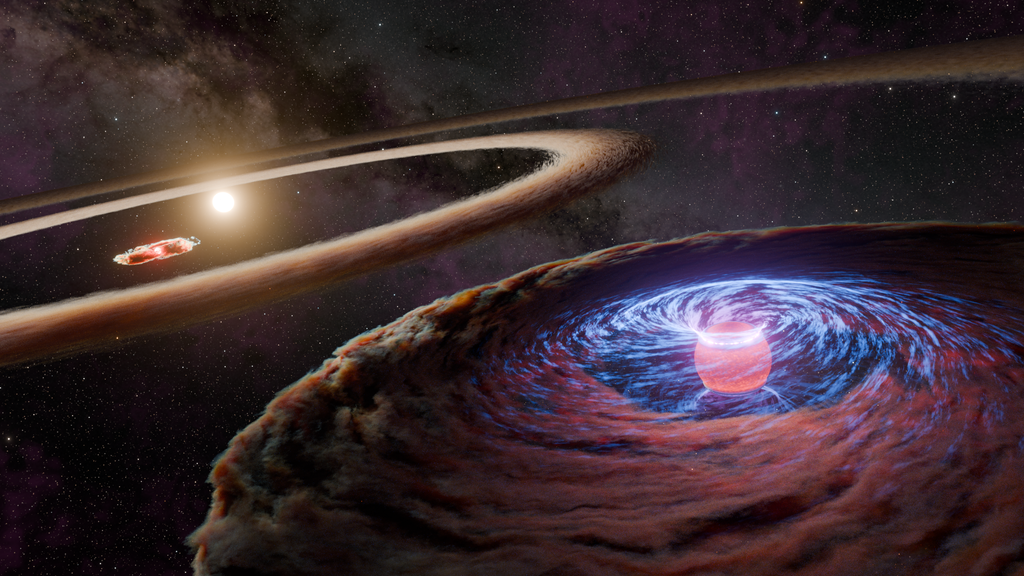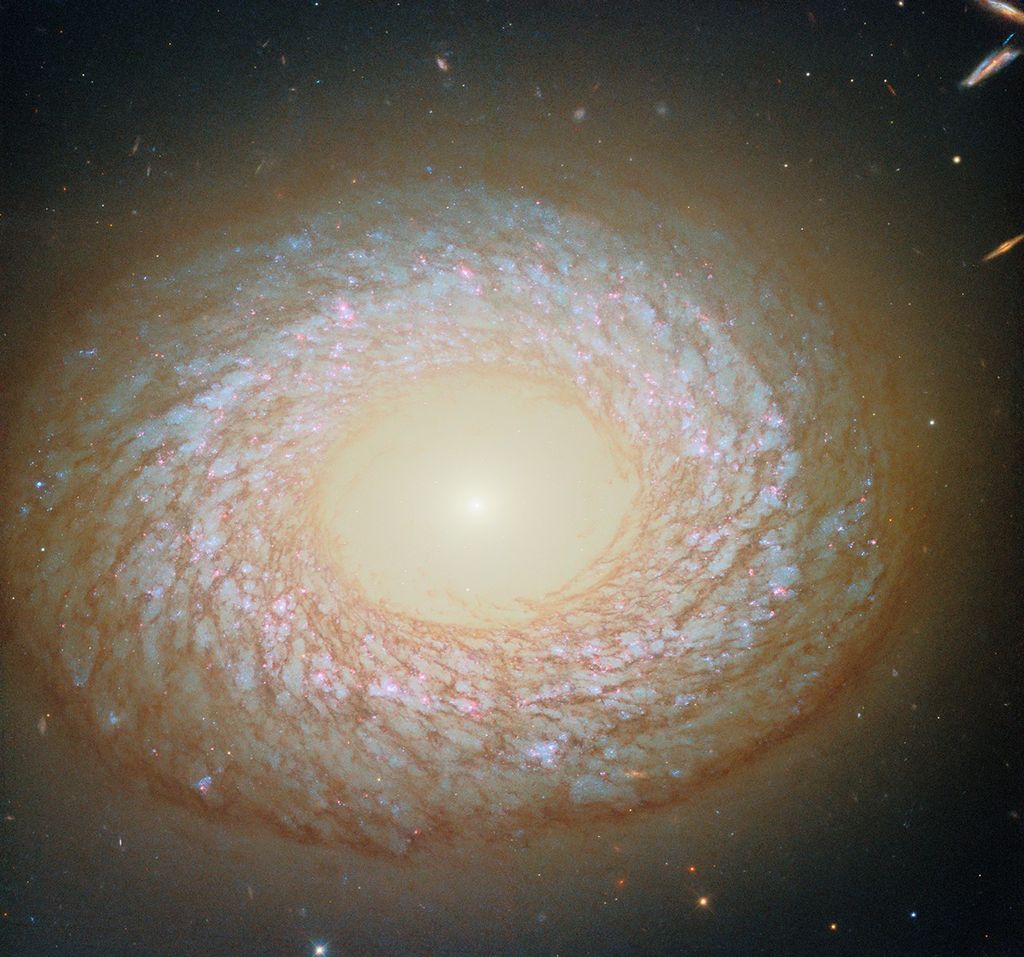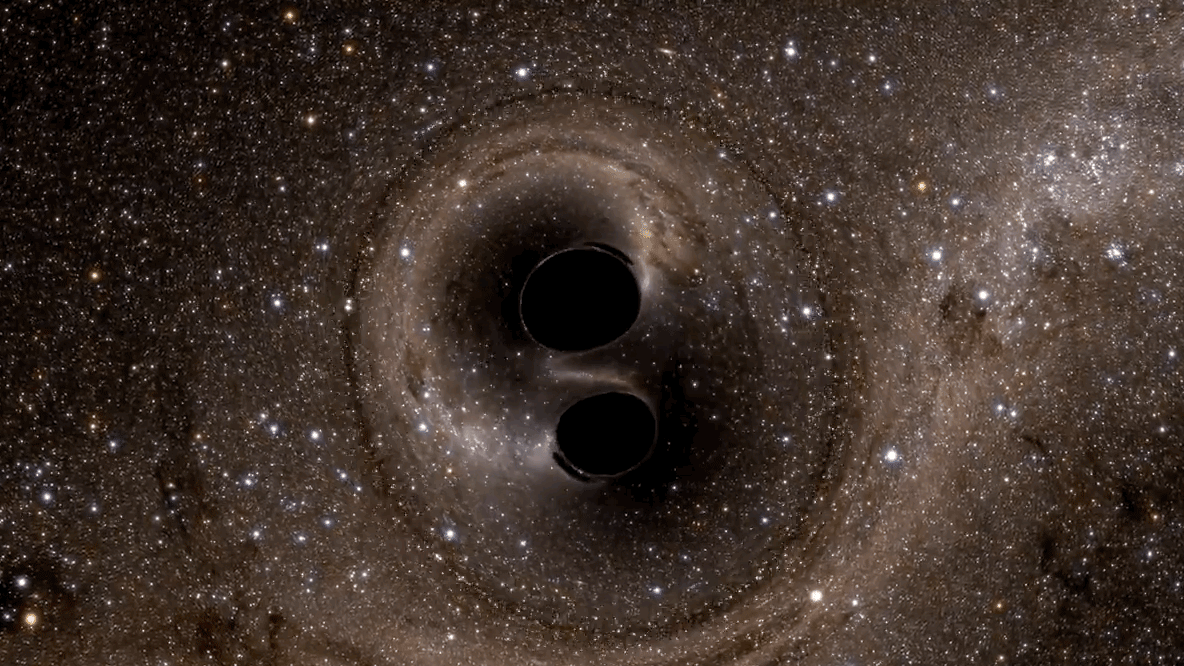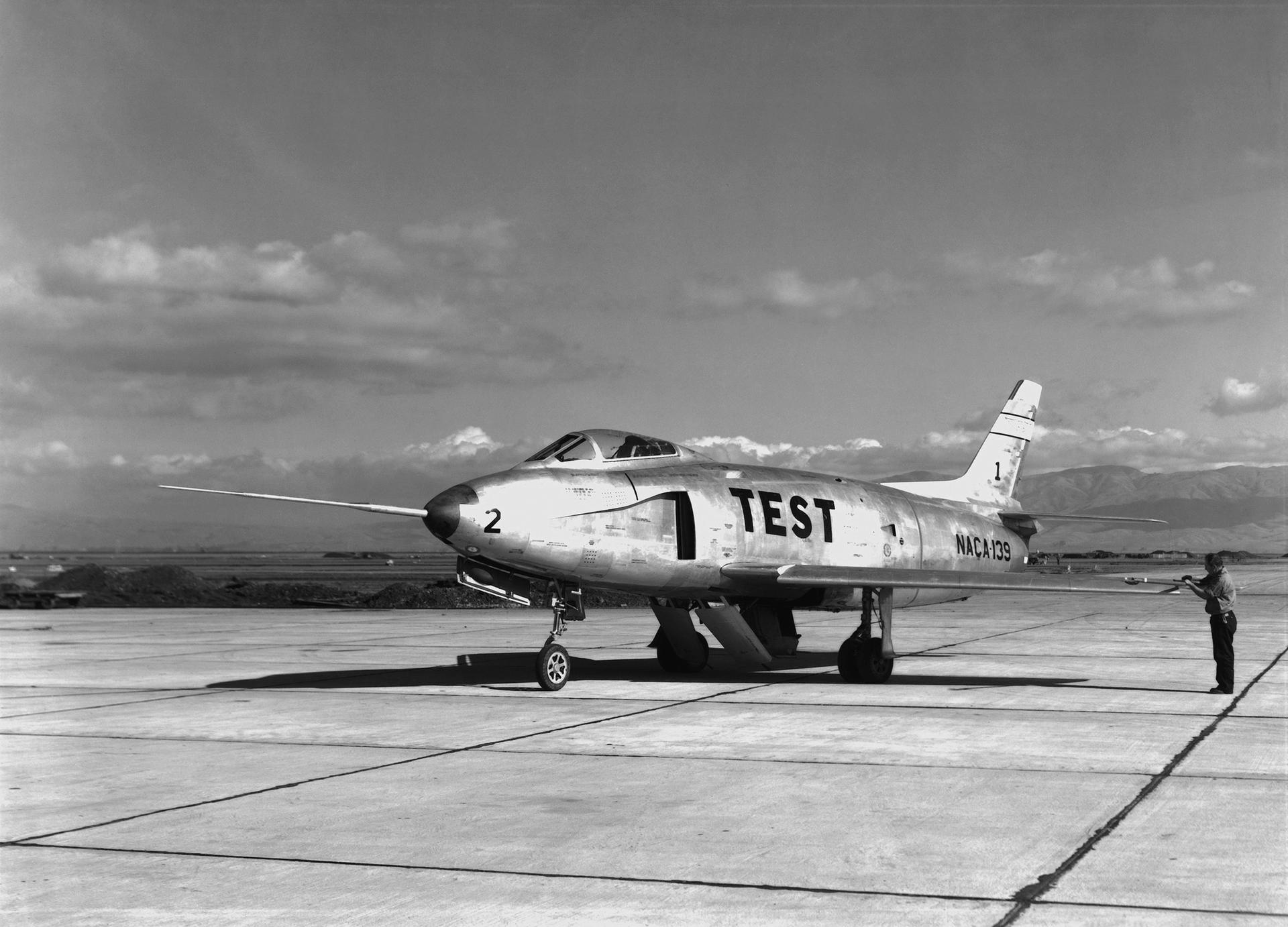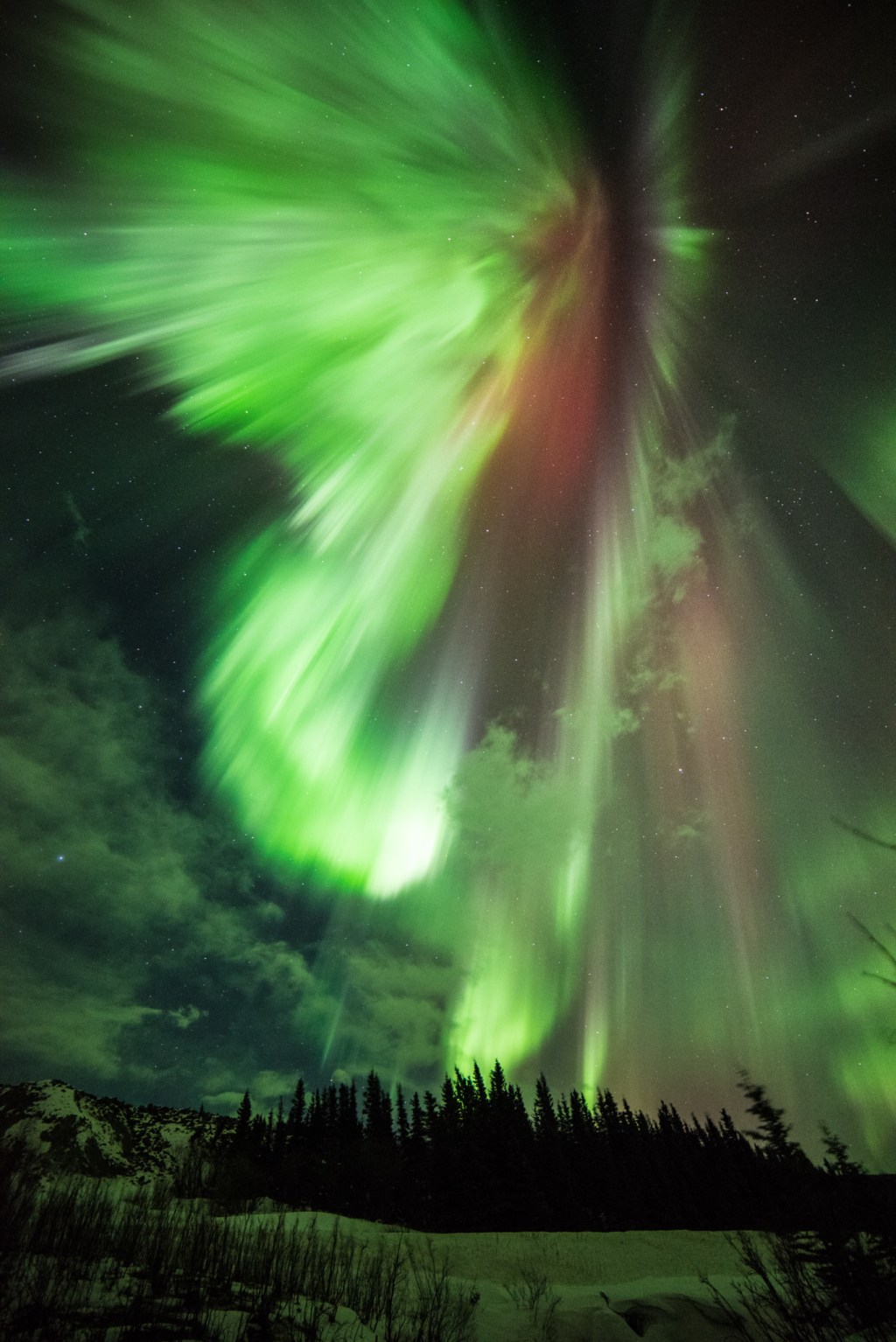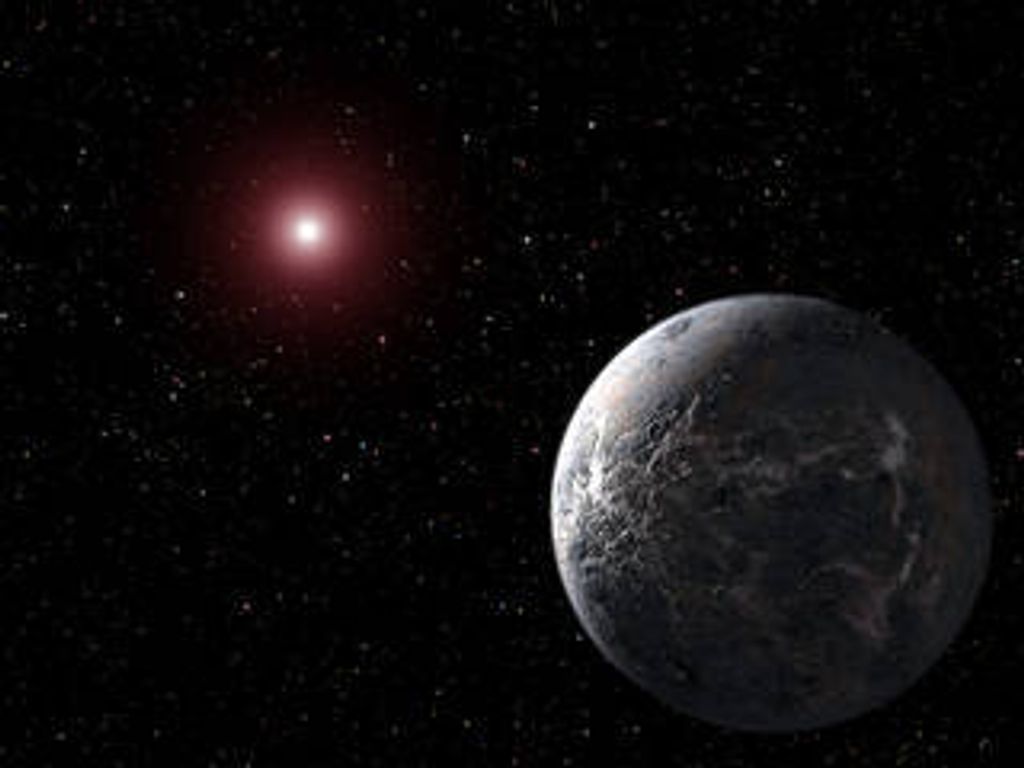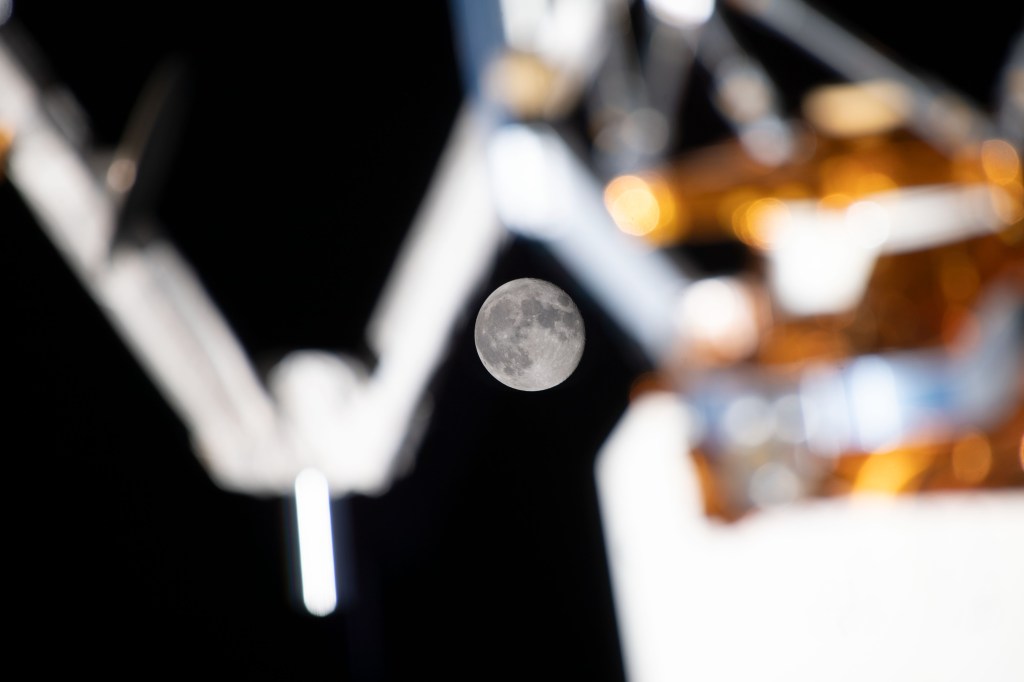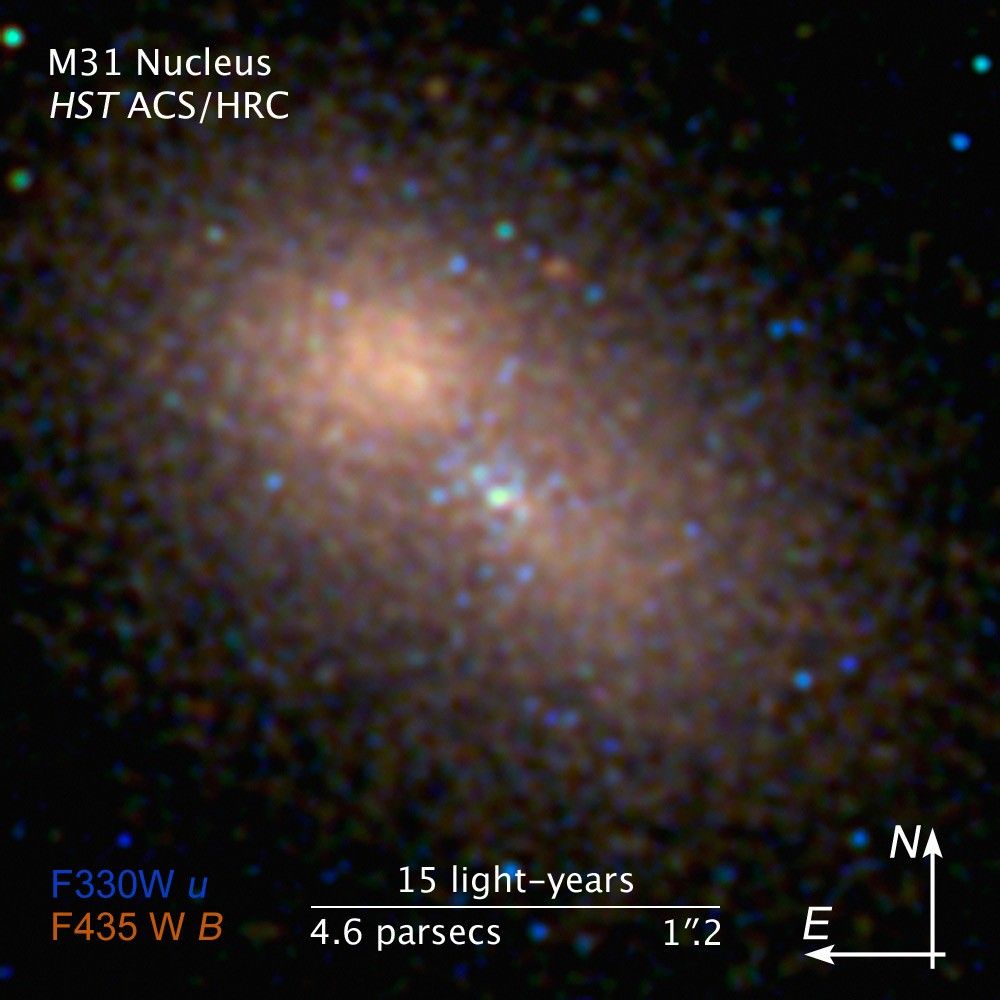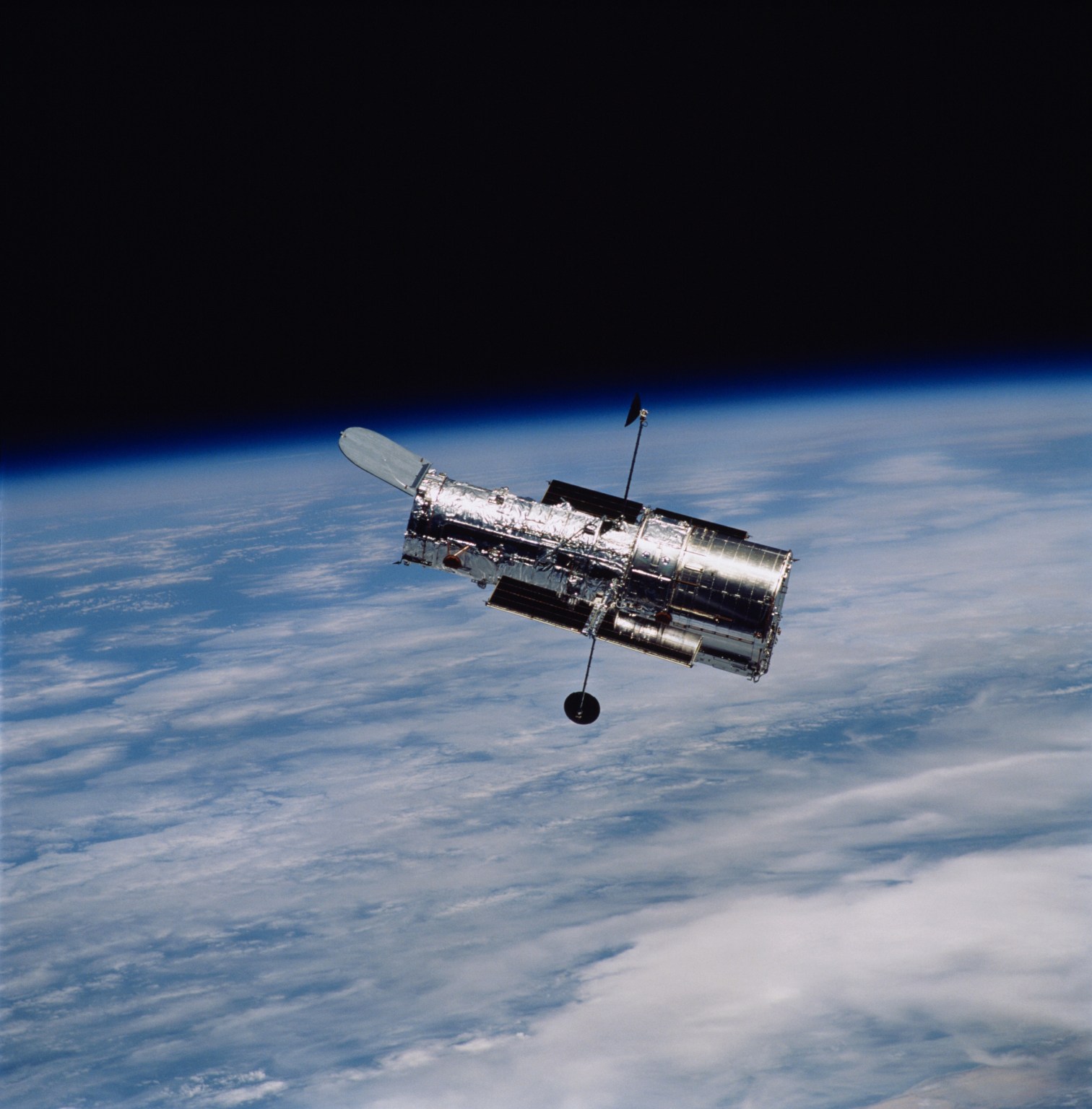1 min read
Hubble Zooms in on Double Nucleus in Andromeda Galaxy
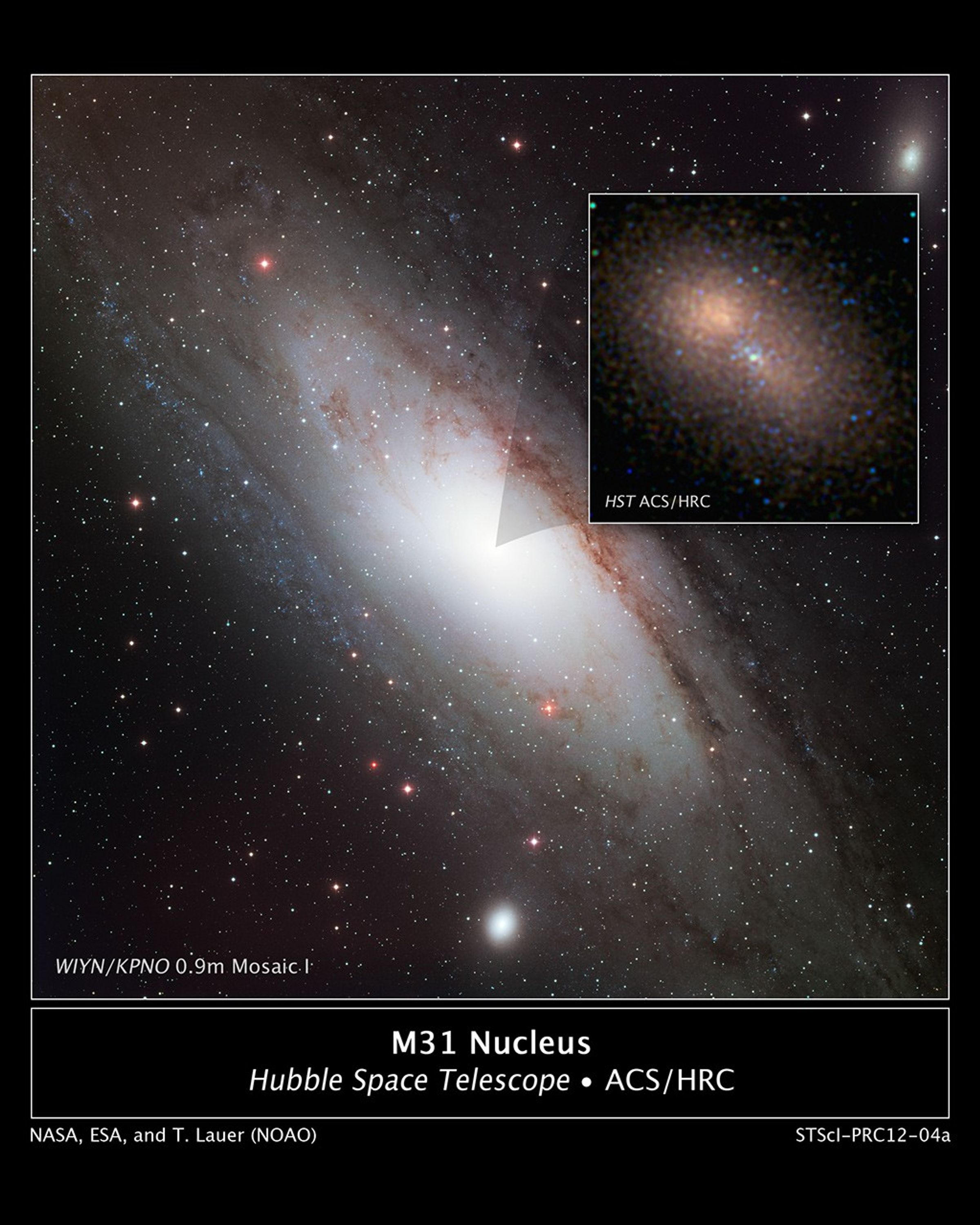
A new Hubble Space Telescope image centers on the 100-million-solar-mass black hole at the hub of the neighboring spiral galaxy M31, or the Andromeda galaxy, one of the few galaxies outside the Milky Way visible to the naked eye and the only other giant galaxy in the Local Group.
This is the sharpest visible-light image ever made of the nucleus of an external galaxy.
The event horizon, the closest region around the black hole where light can still escape, is too small to be seen, but it lies near the middle of a compact cluster of blue stars at the center of the image. The compact cluster of blue stars is surrounded by the larger "double nucleus" of M31, discovered with the Hubble Space Telescope in 1992. The double nucleus is actually an elliptical ring of old reddish stars in orbit around the black hole but more distant than the blue stars. When the stars are at the farthest point in their orbit they move slower and give the illusion of a second nucleus.
The blue stars surrounding the black hole are no more than 200 million years old, and therefore must have formed near the black hole in an abrupt burst of star formation. Massive blue stars are so short-lived that they would not have enough time to migrate to the black hole if they were formed elsewhere.
Astronomers are trying to understand how apparently young stars were formed so deep inside the black hole's gravitational grip and how they survive in an extreme environment.
The fact that young stars are also closely bound to the central black hole in our Milky Way galaxy suggests this may be a common phenomenon in spiral galaxies.
Tod R. Lauer of the National Optical Astronomy Observatory in Tucson, Ariz., assembled this image of the nuclear region by taking several blue and ultraviolet light exposures of the nucleus with Hubble's Advanced Camera for Surveys high-resolution channel during September 2005 and February 2006, each time slightly moving the telescope to change how the camera sampled the region. By combining these pictures, he was able to construct an ultra-sharp view of the galaxy's core.
Lauer is presenting these Hubble observations today at the meeting of the American Astronomical Society in Austin, Texas.
The image of the Andromeda galaxy was taken on Jan. 13, 2001, with the WIYN/KPNO 0.9-meter Mosaic I by T. Rector and B. Wolpa of the National Optical Astronomy Observatory in Tucson, Ariz.
About the Object
- R.A. PositionR.A. PositionRight ascension – analogous to longitude – is one component of an object's position.00h 42m 44.0s
- Dec. PositionDec. PositionDeclination – analogous to latitude – is one component of an object's position.41° 16' 8.99"
- ConstellationConstellationOne of 88 recognized regions of the celestial sphere in which the object appears.Andromeda
About the Data
- Data DescriptionData DescriptionProposal: A description of the observations, their scientific justification, and the links to the data available in the science archive.
Science Team: The astronomers who planned the observations and analyzed the data. "PI" refers to the Principal Investigator.Inset image: This image was created from Hubble data from proposal 10571: T. Lauer (NOAO), J. Kormendy and K. Gebhardt (University of Texas, Austin), R. Bender (Universitats-Sternwarte, Munich), and R. Green (NOAO). - InstrumentInstrumentThe science instrument used to produce the data.WIYN/KPNO>0.9m (galaxy image), and HST>ACS/HRC (inset)
- FiltersFiltersThe camera filters that were used in the science observations.Hubble Image (inset image): F330W (u) and F435W (B)
- Object NameObject NameA name or catalog number that astronomers use to identify an astronomical object.M31, NGC 224, Andromeda Galaxy, and M31 Nucleus (inset image)
- Object DescriptionObject DescriptionThe type of astronomical object.Nucleus of M31
- Release DateJanuary 11, 2012
- Science ReleaseHubble Zooms in on Double Nucleus in Andromeda Galaxy
- Credit

Hubble Image (inset image): This image is a composite of separate exposures acquired by the ACS instrument on HST. Several filters were used to sample broad wavelength ranges. The color results from assigning different hues (colors) to each monochromatic (grayscale) image associated with an individual filter. In this case, the assigned colors are: Blue: F330W (u) Orange: F435W (B)

Related Images & Videos
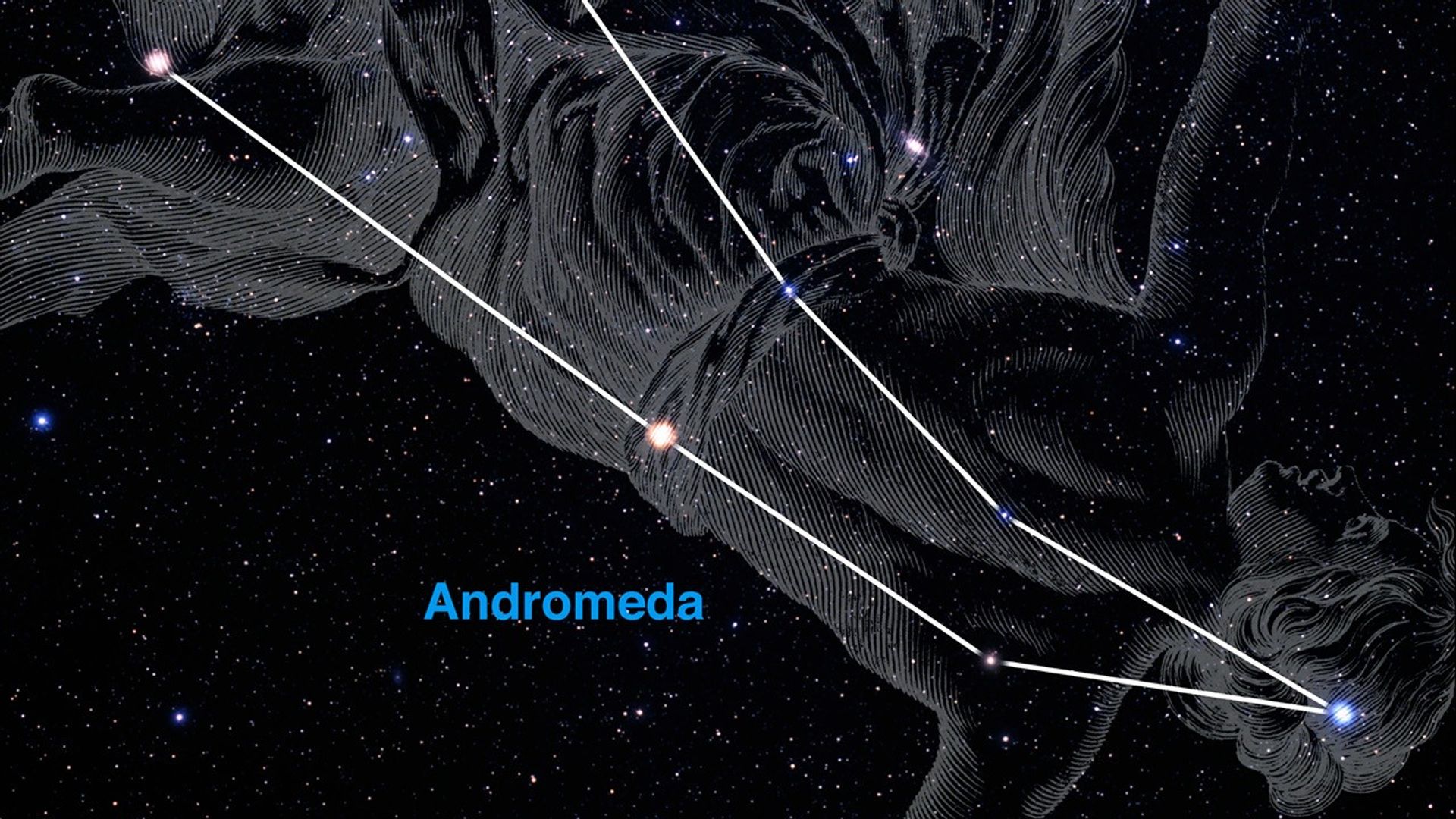
Zoom into Sharpest Visible-light View of Andromeda Galaxy's Double Nucleus
This zoom dives deep into the nucleus of the neighboring spiral galaxy M31, also known as the Andromeda galaxy. The new Hubble Space Telescope image centers on the 100-million-solar-mass black hole at the core of the galaxy and the young blue stars surrounding the black hole....
Share
Details
Claire Andreoli
NASA’s Goddard Space Flight Center
Greenbelt, Maryland
claire.andreoli@nasa.gov

